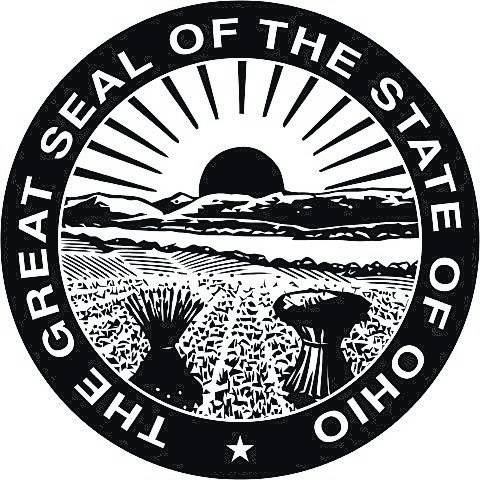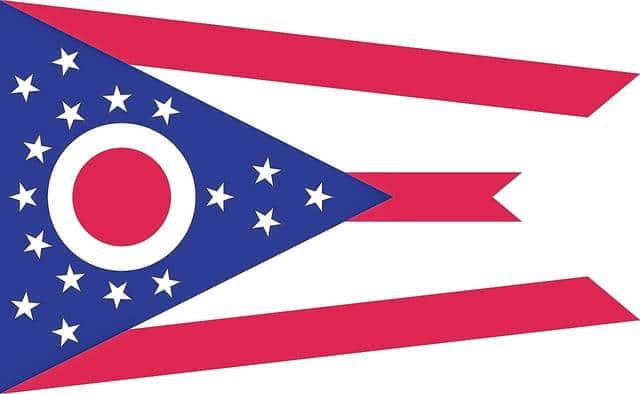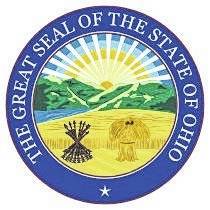


When I was in junior high at Roger O. Borror — the old one — I took my favorite class ever. It was Ohio History with Mrs. Mary Vance.
The class captivated my attention about Ohio and the local area. The class seemed to be something I could relate to easily due to all the living history that was around me that I could visit.
I remember one lesson that I received was about our Ohio state flag and great seal. I also have the privilege to look upon both of these on a daily basis in our historic courthouse.
Recently someone asked me what was hanging behind the court’s bench. Then I explained to him it was our Great Seal of Ohio. He said that he have never seen or heard of it before.
The Ohio state flag was adopted in 1902 and has been our official state flag ever since without any modifications. Designed by John Eisemann of Cleveland, it was patented by him before it was adopted by Ohio.
The Ohio state flag is actually a Burgee — more commonly associated with boating and yachting. Our state flag is also the only state or country flag that is a Burgee.
The flag’s swallow tail possibly came from a guidon design that was carried by the Ohio Infantry Volunteers in the Civil War. Eisemann designed our state flag with other meanings within itself as well.
The colors are the same as our national flag, which are also the same colors of the Union Jack of the United Kingdom. The state flag contains a large blue triangle that represents Ohio’s hills and valleys, and the stripes represent roads and waterways.
The 13 stars grouped about the circle represent the original states of the union; the four stars added to the peak of the triangle symbolize that Ohio was the 17th state. The white circle with its red center not only represents the “O” in Ohio, but also suggests Ohio’s nickname “The Buckeye State.”
When Ohio was established as a state in 1803, we also adopted a state seal based on a sketch by then Secretary of the State William Creighton Jr. This seal’s primary feature was a circular coat of arms that depicts a sunrise in Chillicothe, the state’s first capital, and with our state’s motto, “With God, all things are possible.”
After several changes and modifications over the years, our Great Seal of Ohio was updated and adopted in 1996.
The seal would have a circular shield; in the right foreground of the shield would be a full sheaf of wheat bound and standing erect. In the left foreground, a cluster of 17 arrows bound in the center and resembling in form the sheaf of wheat, which would represent Ohio being the 17th State of the Republic; in the background, a representation of Mount Logan of Ross County as viewed from Adena State Memorial; over the mount, a rising sun three-quarters exposed and radiating 13 rays to represent the 13 original colonies shining over the first state in the Northwest Territory.
The background and foreground would be a representation of the Scioto River and cultivated fields in Ohio.
Mrs. Vance gave me an undying appreciation of our state and its history. Now as I get time I like to share as much as possible about our great state and our local area history.
So, when you are out and about, and someone says something about our state flag, you can politely advise him or her it’s not a flag — it’s a Burgee.
Kelly Hopkins of Wilmington is Past Post Commander, Veterans of Foreign Wars Post 6710.





